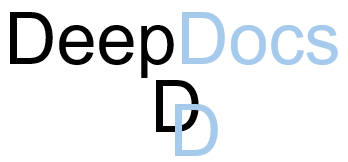The utilization of nanoparticle drug delivery systems has revolutionized cancer treatment, offering unprecedented precision and efficacy in targeting cancer cells while minimizing adverse effects. This article delves into the key aspects of this innovative approach, examining the mechanisms, clinical applications, and regulatory challenges, alongside the future directions and economic implications within the field.
Precision Targeting with Nanoparticles
Nanoparticles offer remarkable precision in cancer treatment, ensuring that anti-cancer drugs reach their intended targets with minimal collateral damage to healthy tissues. Through engineering, nanoparticles can target specific cancer cells, reducing adverse side effects and improving patient outcomes. Recent studies have shown that nanoparticles such as liposomes and quantum dots are employed in extending drug lifespans, such as Doxil for HIV and cancer treatments. Additionally, poly(2-oxazoline) (POx)-lipid conjugates have demonstrated effectiveness comparable to polyethylene glycol (PEG) in drug delivery platforms.
Advantages:
- Targeted Drug Delivery: Focused delivery reduces damage to healthy tissues.
- Controlled Drug Release: Enhances drug effectiveness by releasing medication in a controlled manner.
Challenges:
- Understanding Delivery Mechanisms: The complexity of nanoparticle interactions within biological systems can limit efficiency.
- Inconsistent Results: Variability in nanoparticle behavior can lead to inconsistent therapeutic outcomes.
Recent Facts:
- The Wilhelm Lab at the University of Oklahoma has quantified the efficiency of nanoparticle transportation by endothelial cells in breast cancer models.
- Pfizer’s research into nanoparticle “missiles” promises a cancer treatment with reduced side effects by sparing normal cells.
Nanoparticles in Drug Delivery: The Mechanisms
Understanding the mechanisms behind nanoparticle drug delivery is crucial for optimizing their therapeutic potential and ensuring clinical success. Researchers have developed advanced methodologies to enhance nanoparticle interactions with biological systems, improving drug delivery efficiency. For instance, nanoparticles adapt their surfaces by forming a biomolecule corona, which modifies their interactions and impacts on physiological systems.
Pros:
- Enhanced Interactions: Advanced methods improve the efficiency of drug delivery.
- Effective Formulations: Understanding mechanisms lead to more effective nanomedicine formulations.
Cons:
- Complexity of Interactions: Interaction with various biological barriers poses significant challenges.
- Extensive Research: Time-consuming and costly research is needed to fully elucidate these mechanisms.
Recent Facts:
- Solid lipid nanoparticles (SLNs) and nanostructured lipid carriers (NLCs) enhance drug absorption by shielding them from acidic stomach environments.
- Micelles created from amphiphilic block polymers possess hydrophobic centers, enhancing breast cancer therapy delivery.
Mechanisms Overview:
- Formation of Biomolecule Corona: Alters interactions and physiological impact.
- Shielding in Stomach Environment: Use of SLNs and NLCs.
- Hydrophobic Centers in Micelles: Enhance drug delivery efficiency.
Clinical Applications and Regulatory Challenges
While nanoparticle drug delivery systems hold great promise, the transition from preclinical studies to clinical applications presents significant regulatory challenges. Positive outcomes in clinical trials show potential in using nanoparticles for treating various cancers, yet there still remains a gap between preclinical research and FDA-approved formulations.
Pros:
- Positive Clinical Outcomes: Demonstrates potential to improve patient care.
- Guideline Establishment: Regulatory bodies are beginning to set guidelines for nanomedicine approval.
Cons:
- Preclinical to Clinical Disconnect: Indicates a need for further regulatory development.
- Rigorous Testing and Validation: Ensuring safety and efficacy in clinical settings is challenging.
Recent Facts:
- The global nanomedicine market is anticipated to reach $455.70 billion by 2031, fueled by advancements in healthcare and research.
- Multifunctional polymeric nanoparticles are actively delivering combinations of anticancer agents like trastuzumab and paclitaxel in targeted breast cancer therapies.
Regulatory Challenges Overview:
- Establishment of Guidelines: Essential for regulatory approval.
- Ensuring Clinical Safety: Rigorous testing and validation are critical to patient safety.
Innovative Strategies and Future Directions
Emerging strategies in nanomedicine, particularly through the use of smart nanoparticles and personalized protein coronas, are paving the way for future advancements in cancer treatment. Innovative approaches like ROS-responsive nanoparticles show promise in overcoming current therapeutic limitations.
Pros:
- Smart Drug Delivery Systems: Facilitate improved therapeutic outcomes.
- Personalized Medicine: Customizable nanoparticle formulations enhance treatment specificity.
Cons:
- Substantial Investment Required: High R&D costs can be a barrier to adoption.
- Long-term Safety: Requires comprehensive study and validation.
Recent Facts:
- Combined nanoparticle therapies, including CDT, PDT, and SDT, have shown efficacy in targeting glioblastoma.
- Poly(2-oxazoline)-based liposomes demonstrate comparable efficacy to PEG-based systems in mRNA delivery.
Future Directions Overview:
- Smart Drug Delivery Systems: Overcoming current limitations.
- Personalized Approaches: Enhanced patient response through customization.
Economic and Market Implications
The economic impact and market implications of nanomedicine are profound, with potential for significant growth and transformative effects on the pharmaceutical industry. The nanomedicine market is poised to grow rapidly, offering new opportunities for investment and innovation.
Pros:
- Market Growth: Projected substantial growth offers investment opportunities.
- Cost-Efficient Manufacturing Processes: Enhances accessibility and affordability of nanomedicines.
Cons:
- High Initial Research Costs: Pose challenges for smaller companies.
- Regulatory Hurdles: Rigorous safety evaluations can slow down commercialization.
Recent Facts:
- The global nanomedicine market is expected to reach $455.70 billion by 2031, with a CAGR of 11.89%.
- FDA regulations classify nanomedicines as combination products, emphasizing the need for precise technological standards.
Economic Implications Overview:
- Investment Opportunities: Driven by market growth.
- Cost Challenges: Addressing high initial research and development expenses.
Conclusion
Nanoparticle drug delivery systems represent a significant advancement in cancer treatment, offering precise targeting, improved efficacy, and reduced adverse effects. Despite regulatory and research challenges, the future of nanomedicine holds considerable promise. Ongoing innovations and market growth provide a compelling case for increased investment and development in this transformative field.
This innovative approach paves the way for personalized and effective cancer therapies, ultimately improving patient outcomes and setting new standards in oncological care.


